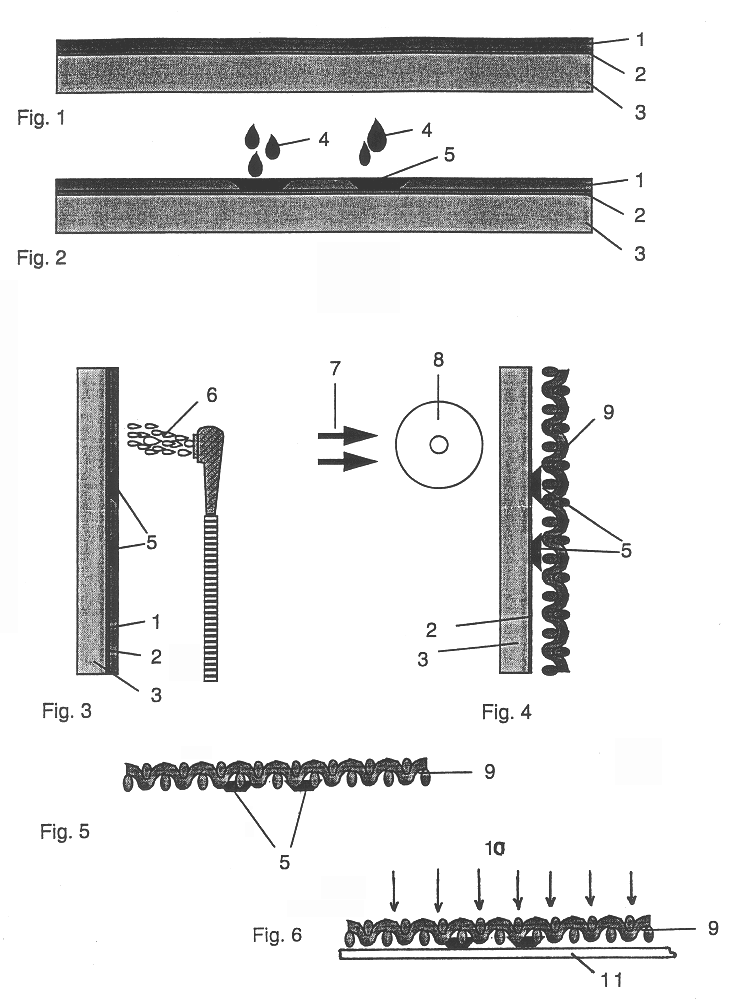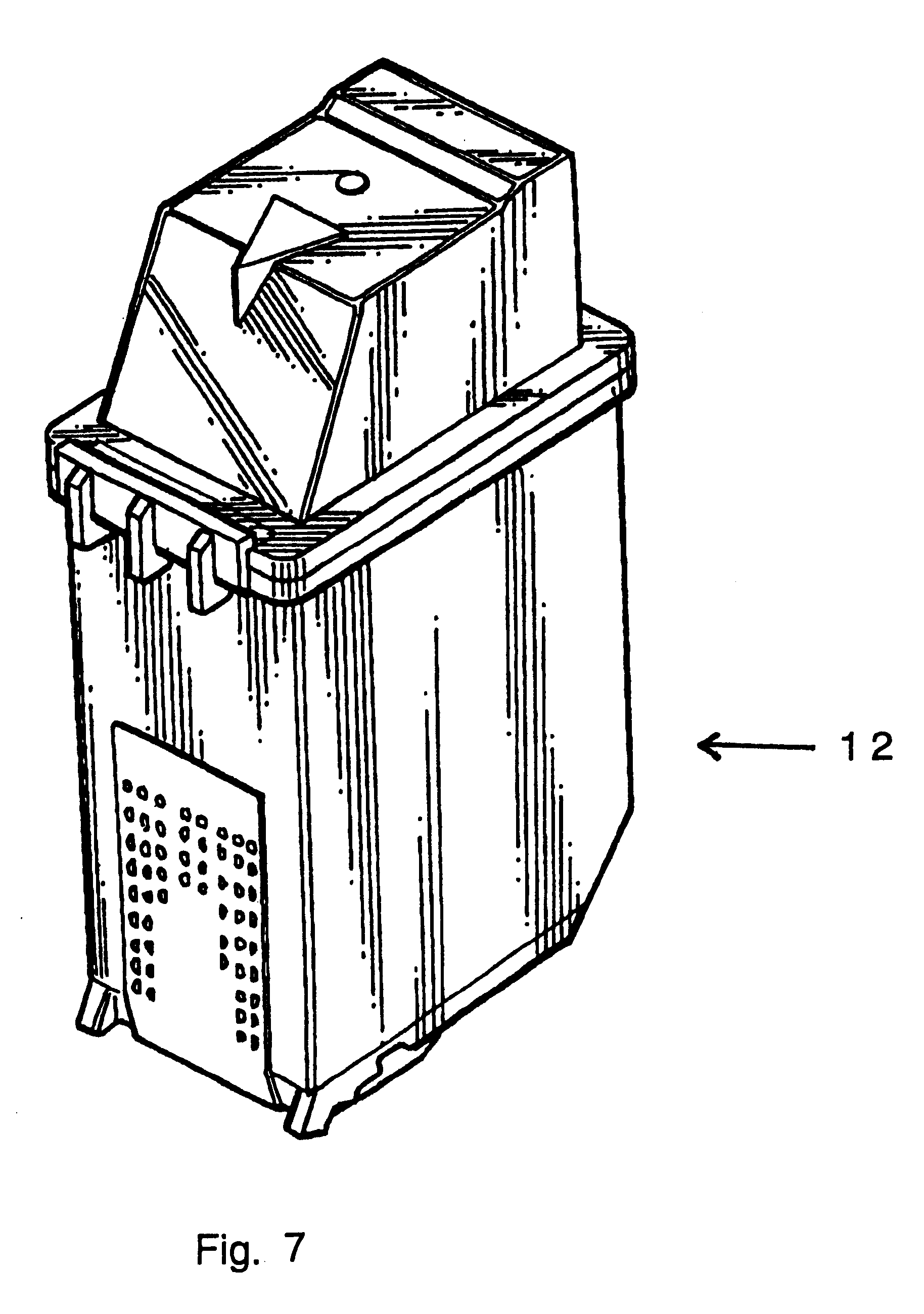Method of screen printing stencil production
a stencil and screen printing technology, applied in the direction of printing process, duplicating/marking method, decorative arts, etc., can solve the problems of time-consuming and laborious screen production, black parts of the positive not allowing light, and normal lighting cannot be used throughout the screen production process in any method
- Summary
- Abstract
- Description
- Claims
- Application Information
AI Technical Summary
Benefits of technology
Problems solved by technology
Method used
Image
Examples
example 1
Polyethylene terephthalate film base of 75 .mu.m thickness was coated with a layer of the following dispersion at a thickness of 0.5 to 1 .mu.m using 0.010 in Meyer bar, in order to provide a release layer:
The coated film base was then coated on the release layer side with the following first coating composition to a thickness of 8 .mu.m using a 0.050 in Meyer bar:
The first coating composition was dried using a warm fan operating at 40.degree. C. to give a first coating layer on the polyethylene terephthalate film base. The following second coating composition was then coated onto the first coating layer to a thickness of 5 .mu.m using a 0.020 in Meyer bar:
The coated composition was dried using a warm air fan operating a 40.degree. C. to give a receptor element having a two-layer stencil forming coating. The following imaging composition was prepared and introduced to an ink-jet printer cartridge suitable for use in a Hewlett Packard 550 ink-jet printer.
The cartridge was fitted to t...
example 2
Example 1 was repeated exactly except that the following imaging composition was prepared and used:
The final screen was again robust with no reticulation and was found capable of printing more than 500 copies on paper using a commercial screen-printing ink.
example 3
Example 1 was repeated exactly except that the following single coating composition was used instead of the first and second coating compositions of example 1.
This composition was coated on the sub-layer of example 1 at a coating thickness of 11 .mu.m using a 0.065 in Meyer bar. The final screen was robust with no reticulation and was found capable of printing more than 500 copies on paper using a commercial screen-printing ink.
PUM
| Property | Measurement | Unit |
|---|---|---|
| wt. % | aaaaa | aaaaa |
| thickness | aaaaa | aaaaa |
| thickness | aaaaa | aaaaa |
Abstract
Description
Claims
Application Information
 Login to View More
Login to View More - R&D
- Intellectual Property
- Life Sciences
- Materials
- Tech Scout
- Unparalleled Data Quality
- Higher Quality Content
- 60% Fewer Hallucinations
Browse by: Latest US Patents, China's latest patents, Technical Efficacy Thesaurus, Application Domain, Technology Topic, Popular Technical Reports.
© 2025 PatSnap. All rights reserved.Legal|Privacy policy|Modern Slavery Act Transparency Statement|Sitemap|About US| Contact US: help@patsnap.com



